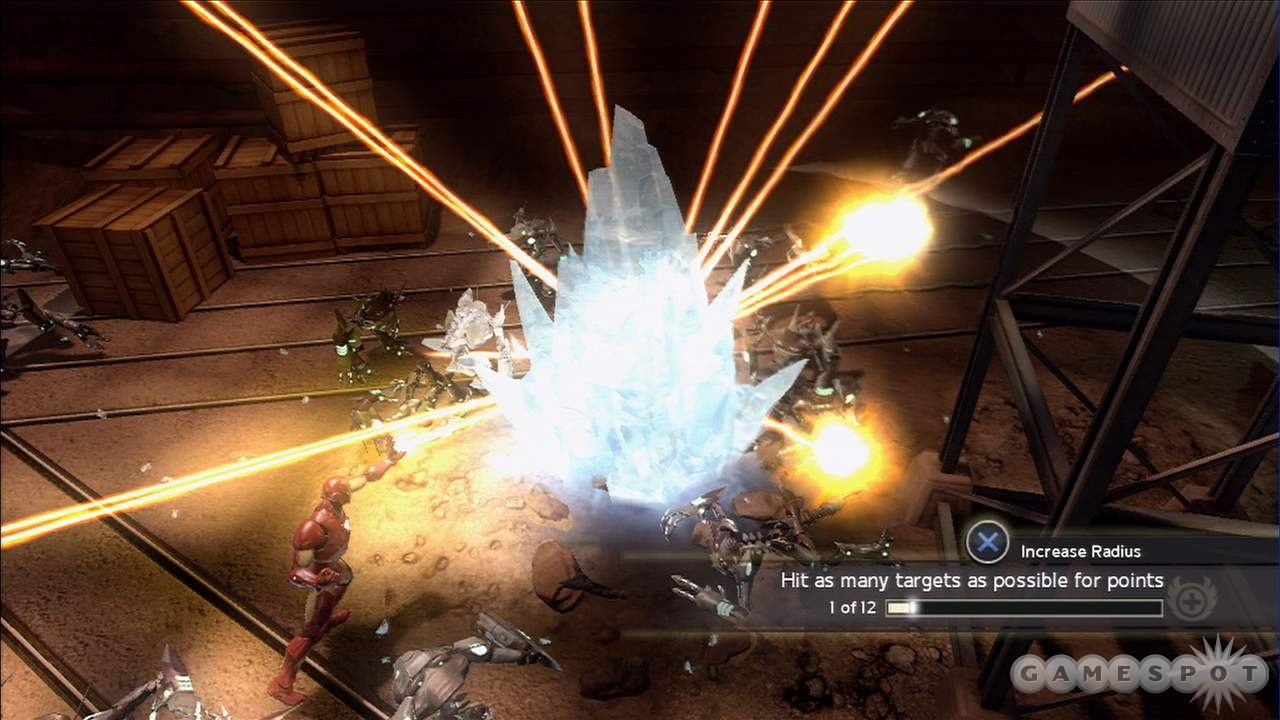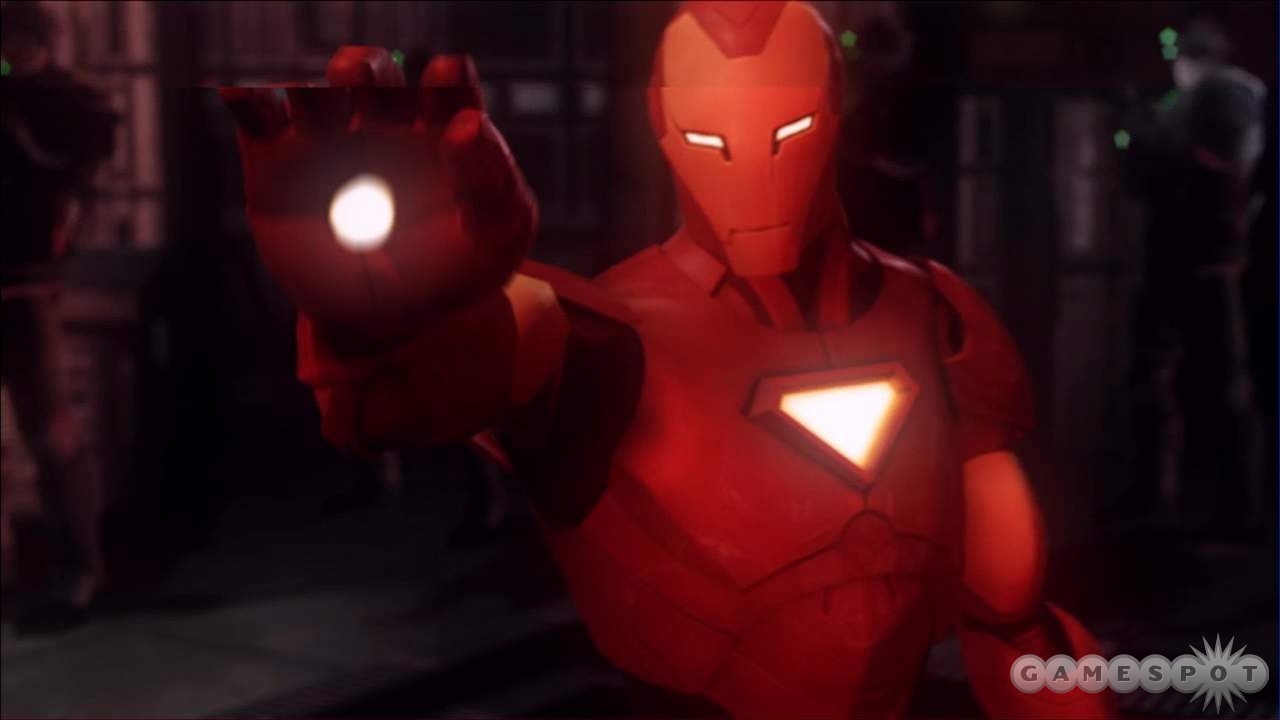You don't need to be a comic book geek to know that Marvel: Ultimate Alliance 2 is a lot of fun. Mashing on buttons to make the screen erupt with sparkling superpowers and flashy martial arts squirms into the pleasure center of the brain, and once you succumb to the innate delights, it's hard to tear yourself away. For better and for worse, this sequel to 2006's action role-playing game is highly reminiscent of its predecessor: it's packed with heroes and villains culled from the Marvel Universe, brims with button-tapping glee, and suffers from occasional and annoying technical idiosyncrasies. Its improvements to the formula can't be ignored, however. Marvel: Ultimate Alliance 2 is easier to look at and features an intriguing character dialogue component. It also ties the heroic crew together with a much more intriguing story based on the Marvel Civil War miniseries, though comic fans should note that it takes more than a few liberties with that narrative. This isn't a groundbreaking game, but it's an enjoyable and replayable one.
The first half-hour of the game introduces you to all you'll need to know to get you through. From an isometric camera view, you lead a team of four Marvel stars through hordes of expendable henchmen and glowering robots, occasionally taking detours to solve simple puzzles and bash on the villains standing between you and fist-pumping victory. You lead one hero at a time, while the AI and/or other players, online or off, control the other three. Regardless of which heroes and antiheroes from the roster of about two dozen you choose to take along, they can all string two types of melee attacks into combos, grab various objects and enemies to throw around, and perform four superpowers limited only by a quick-recharging power meter. While each controls more or less the same, there's a good amount of variety among the heroes. Storm can fly and knock down multiple foes at a time with a gust of wind; Venom's tongue can lash about, doing damage to any nearby enemies; and Iceman can call forth an eruption of ice to impale villains from underneath. Whether you're on your own or with buddies, the action is good, laid-back fun.
However, not all the characters are created equal. They're all fairly balanced, but that doesn't make them all correspondingly fun to play. The Invisible Woman's debuffs can be helpful, but she's not as viscerally appealing as Wolverine, with his dramatic clawing, or Deadpool, whose well-rounded powerset and self-referential one-liners make him consistently satisfying to use. However, ceaseless button mashing can make even the best characters tiresome, especially once you've discovered effective patterns that you can keep spamming again and again. Fortunately, you can change easily to another character not controlled by another player and switch unlocked heroes in and out of your active crew on the fly. If you're on your own, you'll be pleased to know that the AI often does a good enough job of taking care of the characters not in your control, using powers frequently and choosing enemies wisely. That isn't always the case, though. Every so often, you'll glimpse AI-driven heroes wandering about but contributing nothing to the chaos, and as in the first game, they might get stuck on objects or stutter about in an animation loop until they break free.
The most notable additions to the action are fusion powers. As you damage enemies, you fill up a fusion meter, and once it's charged up, you can initiate a two-hero fusion attack. There are several types of attacks, depending on the two heroes involved in the fusion. Guided attacks, like the fire-and-ice beam created by Iceman and the Human Torch, let you maneuver the pair about the screen, zapping any foes unlucky enough to get caught in their elemental stream. Clearing attacks, appropriately, clear the immediate area of baddies, such as the laser deflection that Iron Man and Captain America perform. Different fusions come in handy at different times, but many of them are absolutely fantastic to watch, like any of those featuring Storm's whirlwind. Various combinations of heroes don't all make for singular fusions, however. Storm-plus-Gambit is essentially the same fusion as Storm-plus-Spiderman--one throws cards into the cyclone, while one spews webbing into it. The repetition among fusions is disappointing, especially if you tend to stick to the same one or two characters, but fusions are probably the best part of the game: most look fantastic and colorful, they do a lot of damage, and you don't have to be stingy with them.

The story that gives context to all this action is based on two Marvel storylines: author Mark Millar's Civil War comics event and Brian Michael Bendis' Secret War. The narrative doesn't closely follow those plot outlines, but Marvel: Ultimate Alliance 2's version is intriguing, and its tale of superheroes divided over the US government's attempt to force heroes into legally registering has provocative political and social undertones. It also forces you into an eventual decision that doesn't just divide your hero roster, but divides the entire game into two separate story experiences before bringing them back together again. It's a clever method of storytelling that gives you a reason to replay the game again once you've finished the first time, just to see how it plays out if you make the other choice.
Your involvement with the story isn't limited to making a single decision, however. Throughout the game, you'll engage in dialogue with various characters and choose one of three different responses to their statements: aggressive, defensive, and diplomatic. Consistent responses lead to in-game rewards like team medals (more on these to come), though their contribution to the story is disappointingly negligible. The response options often don't fit their category; sometimes, each choice seems equally smarmy (every option might seems like it should have been categorized as "passive-aggressive"). And because the dialogue is based on the situation and not necessarily tailored to the character you're controlling, your choices may not seem completely appropriate. Don't be surprised if you find yourself thinking, "Come on--Venom would never say that!"
As you hack and slash your way through Latveria, the Negative Zone, and other locales, you'll level up and earn team medals, so there are several ways to customize your roster. Customization is a bit more streamlined in the sequel than in the original. For example, you no longer find and equip gear as you did in the original, and you're limited to equipping team-wide medals that may add cold damage to your melee attacks or increase the number of experience orbs you earn. It's disappointing to see the role-playing elements of the original stripped down in such a way; after all, finding more loot is an addictive part of similar games, and Marvel: Ultimate Alliance 2 doesn't seem to benefit in any way from this change. As before, you can let the game handle all the leveling for you and never worry about spending experience orbs and skill points if you don't want to. Sadly, if you prefer to micromanage your heroes, you might get exasperated with a glitch that constantly resets the autoleveling option back to on, even after you turn it off. Other elements of the game have been smoothed out for the better. The menus are easier to navigate, and the addition of a navigation arrow means you'll rarely lose your way. And in the most convenient and slick addition of all, should an online buddy wish to upgrade his hero, he can do so without pausing the game for everyone: the AI will simply take over for him until he returns.
The visuals have also been noticeably smoothed out. Environments are attractive and you'll traverse a nicer variety of locations than in the first Marvel: Ultimate Alliance. There are still too many sterile interiors, but outdoor regions look terrific and colorful. Power effects are snazzy, filling the screen with bolts of electricity and bursts of fire. Character models also look better and, in most cases, seem true to their familiar comic book design. However, both the visuals and the sound design are still exasperatingly uneven. In the character select screen, the heroes look great; during conversations, they look stiff and occasionally bizarre, and the camera might give you a view of their internal geometry. The frame rate can't always handle the excess of particles and explosions; it takes noticeable dips here and there, especially when you're playing online. The inconsistency holds true for the voice acting as well, which is at times right on point (Deadpool was apparently a developer favorite; be sure to listen closely to the closing credits) and at other times laughably campy. The soundtrack and audio effects are rousing and boisterous, qualities perfectly consistent with the subject matter.
There's a lot of game packed onto this disc. Not only will the campaign last you around 15 hours or so, but the branching story gives you a good reason to return. Furthermore, there are additional stand-alone missions to take on, most of which are designed well and are enjoyable to tackle; a trivia game that will test your Marvel comics knowledge; and lots of costumes, audio discs, and dossiers to collect. So while Marvel: Ultimate Alliance 2 may not take the series in a big and bold new direction, or benefit from the kind of refinement you would look for in a sequel, it does deliver the button-mashing, power-flinging, over-the-top action fans of the original would expect. And it's just good fun, even if you don't know Iron Man from Iron Fist.




